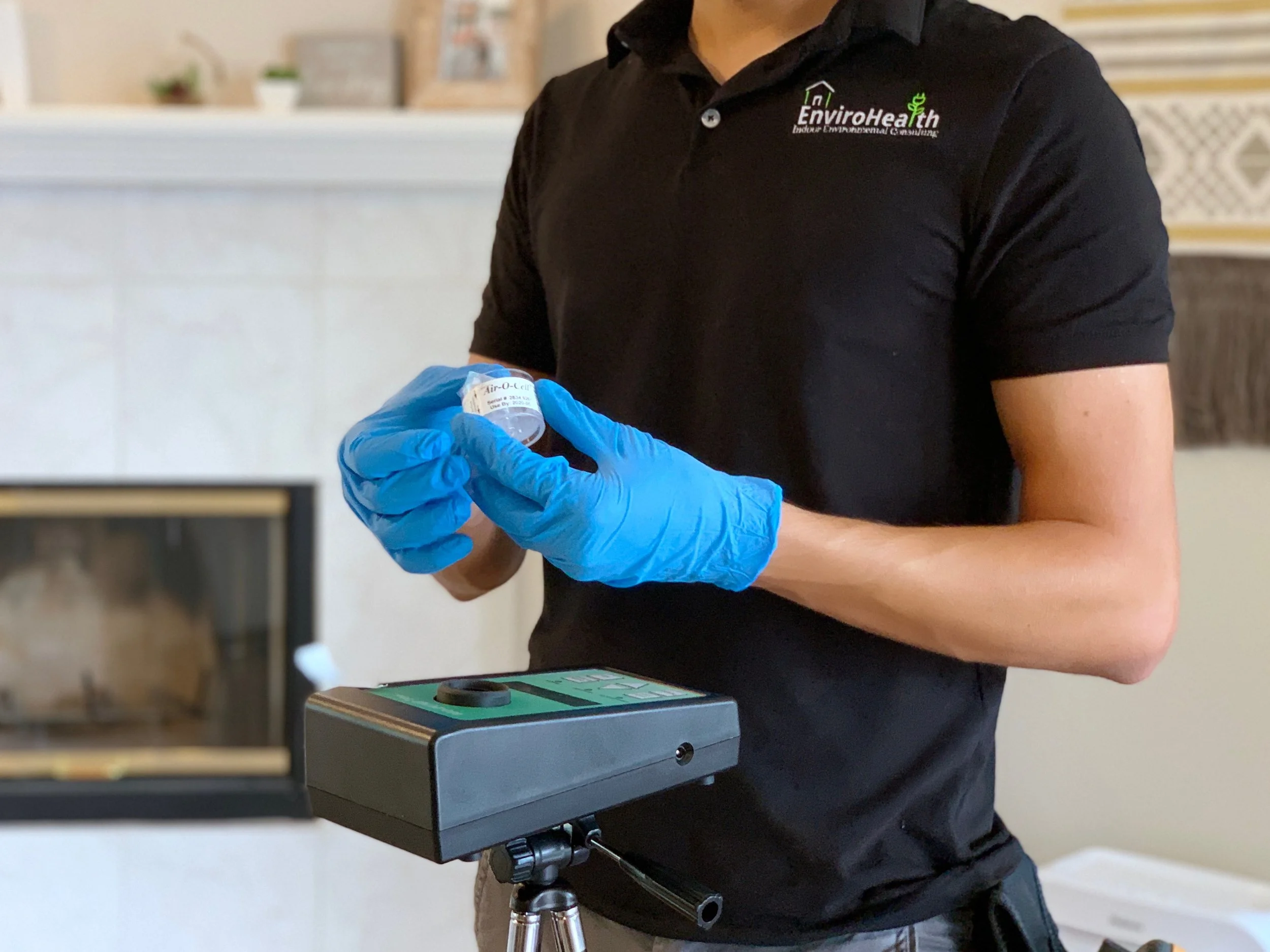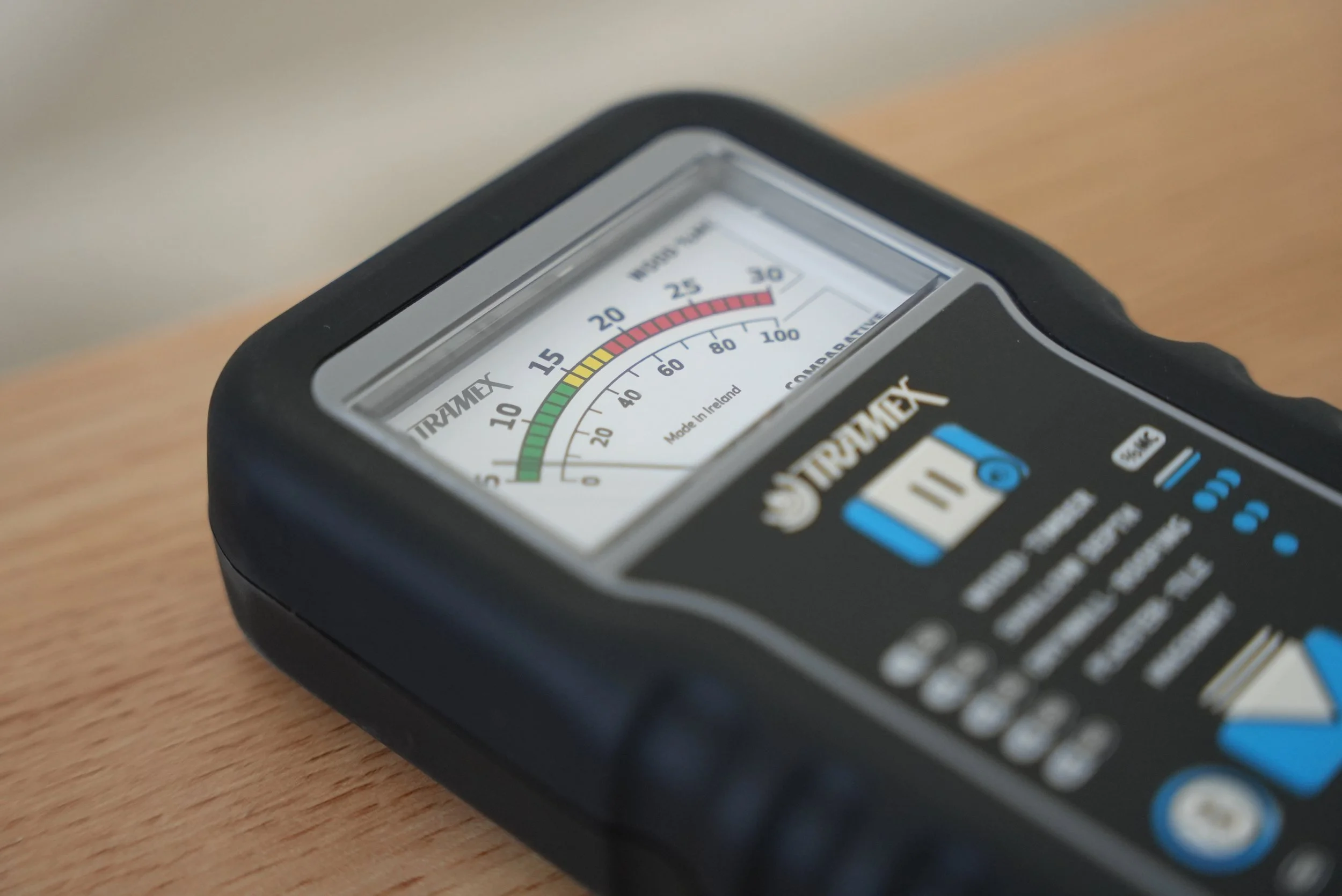
Expert Mold Investigation
EnviroHealth takes pride in our investigation thoroughness. We believe that every mold inspection should first prioritize the actual visual inspection.
These days, almost anybody can go purchase mold test kits online. But what can’t be easily purchased is the knowledge and experience of an environmentalist who specializes in building science and mycology (the study of fungus).
What Is the Process for a Mold Investigation?
Step 1: The Visual Assessment
The first step of a mold investigation is gathering the history of the building/home and performing an extremely thorough visual assessment. The visual assessment includes an inspection of the building, the HVAC, and occupant behaviors. High-risk areas (such as bathrooms, kitchens, attics, air conditioning, etc.) are a prime focus of our investigation. However, there are some more nuanced issues that can occur in a home that should also be investigated. That’s where an expert comes in.
Measurements and testing should only be performed once a thorough assessment has been completed. It is important to realize that all testing methods have limitations, and choosing the right test for the situation and understanding its limitations is crucial. If testing is performed without already understanding the potential issues in the building, it is essentially random guesswork, which can be misleading and a waste of time and money.
Step 2: Measurement and Testing
Our measurements and testing methods include advanced, top-of-the-line tools such as moisture meters, thermal imagining, hygrometers (to measure humidity, dew point, vapor pressure, etc.), smoke machines, pressure sensors, and more.
EnviroHealth also separates itself from the rest with a specialty in Mycology and the ability and certifications to perform on-site microscopy. This means that if visual mold is observed during the inspection, it can be identified immediately, without waiting for lab results. Only the more complicated sampling methods (dust DNA testing, air sampling, etc.) will be sent to labs. This also allows for additional information to aid the investigation.
Step 3: Creating a Report and Protocol
All of the data gathered during the investigation (the visual observations, measurements, lab results, etc.) will be combined and summarized in a very easy-to-read report that includes photos and even videos, if needed. Our reports are so easy to read that you don’t need to have any knowledge of the industry in order to understand the concepts. This also makes it easier for others to understand when sharing the report (to insurance adjusters, remediation specialists, HVAC technicians, contractors, etc.)
If work is needed, you will also receive a protocol (official recommendations) on how to move forward with solving any issues in your home. They may include recommendations on presentation strategies or fully detailed mold remediation plans, depending on your needs. We strongly believe that you should not have to be charged extra in order to receive a protocol, so it is included in the cost.
This is your path to wellness.
More videos, you say?
How much does a mold inspection cost?
The Importance of Understanding Mycology
The Difference Between a Mold Investigation and Indoor Environmental Investigation
Finding the Right Mold Inspector: What Every Homeowner Needs to Know


